National
Justin Trudeau Resigns as Prime Minister
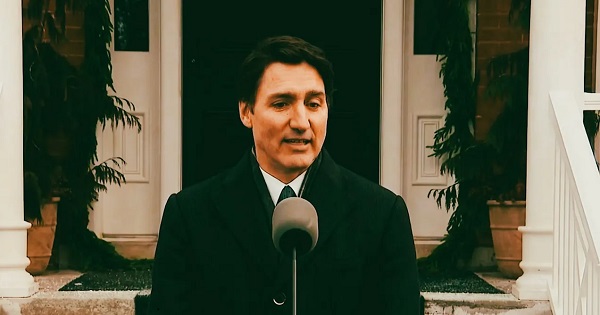
Amid scandals, internal dissent, and economic mismanagement, Trudeau steps down after nearly a decade in power, triggering a leadership race and questions about his legacy
Justin Trudeau has finally called it quits, but let’s not pretend it was on his terms. After nearly a decade of virtue-signaling, reckless spending, and scandals so frequent they could be a Netflix series, Trudeau announced his resignation in a press conference dripping with self-pity and self-praise. But let’s cut through the melodrama: Trudeau isn’t resigning out of some noble desire to “reset” Canadian politics. He’s running for the hills, leaving behind a Liberal Party in chaos, a country divided, and a fiscal crisis that would make any economist break into a cold sweat.
To make his exit smoother—and less humiliating—Trudeau has cooked up one final trick to save his party from immediate disaster. He’s proroguing Parliament until March 24th, giving the Liberals time to select a new leader while avoiding a vote of no confidence that every opposition leader is salivating over. The Conservatives, NDP, and Bloc are all chomping at the bit to hold Trudeau’s government accountable for its incompetence, scandals, and economic mismanagement. And who can blame them? The Liberal government has been teetering on the edge of collapse for months, paralyzed not by opposition obstruction, as Trudeau claims, but by its own refusal to release critical documents on multiple corruption scandals. Trudeau’s prorogation stunt isn’t about giving Canada a “fresh start”—it’s about running out the clock to save his party from political obliteration.
According to Trudeau, he’s stepping down because Parliament has been “paralyzed” by polarization. That’s rich. The truth is, Parliament hasn’t been paralyzed by some abstract cultural divide. It’s been paralyzed by Trudeau’s government refusing to release critical documents about scandal after scandal. Whether it’s the “Green Slush Fund,” where taxpayer dollars were funneled to companies tied to Liberal insiders, or the endless dodging around the Auditor General’s damning reports, Trudeau’s government has been allergic to accountability. Opposition parties haven’t obstructed Parliament—they’ve been doing their job, demanding transparency. But Trudeau, ever the master deflector, wants you to believe it’s all just partisan bickering.
And let’s not forget the real catalyst for this resignation: Chrystia Freeland’s departure. Trudeau would have you think they parted on amicable terms, with him heaping praise on her as a “political partner.” The reality? Freeland’s resignation letter all but called him out for fiscal irresponsibility. She didn’t leave because of some grand philosophical difference with Trudeau. She bailed because she was left holding the bag for his government’s staggering $64 billion overspending scandal.
Freeland, as Finance Minister, was supposed to break the bad news to Canadians, delivering the grim truth about how the Trudeau government had torched billions on pet projects, virtue-signaling initiatives, and bloated programs under the guise of “building back better.” But when she got wind that Mark Carney—the darling of the globalist elite—was being tapped as her eventual replacement, her calculus shifted. Why should she be Trudeau’s scapegoat, taking the fall for his disastrous economic management, when she could jump ship and salvage her political reputation?
So, she bolted, leaving Trudeau scrambling to spin her departure as amicable, even noble. The truth is far less flattering. Freeland wasn’t some hero standing up to Trudeau’s fiscal insanity; she was an opportunist who saw the writing on the wall and decided to save herself. Her timing says it all. Trudeau was ready to throw her under the bus, make her the face of his government’s economic collapse, and Freeland, ever the political survivor, wasn’t about to go down with the ship.
In the end, Trudeau and Freeland are two sides of the same coin. One ran Canada’s economy into the ground while insisting it was all for the greater good, and the other bailed the moment she saw an opportunity to escape the consequences. Trudeau’s resignation and Freeland’s exit don’t mark the end of an era—they mark the unraveling of a failed administration that has left Canada worse off than it was a decade ago.
But it doesn’t end there because Justin Trudeau’s resignation wasn’t just an end to his tenure—it was a ghost story. Lurking in the background of his carefully choreographed farewell was the unmistakable shadow of Stephen Harper, the former Conservative Prime Minister Trudeau loved to blame for just about everything. Even as he stepped down, Trudeau couldn’t resist invoking the specter of his political nemesis, indirectly justifying his decision to prorogue Parliament by comparing it to Harper’s 2008 decision to do the same.
Trudeau attempted to spin his prorogation as necessary, claiming Parliament had been paralyzed by obstruction and filibustering. But anyone paying attention knows that Trudeau’s move was about avoiding immediate accountability. Facing confidence votes in a chaotic minority government, with scandals piling up and his party splintering, Trudeau needed an out. And who better to use as cover than Harper, the so-called architect of prorogation?
But here’s the irony Trudeau can’t escape: while he used to condemn Harper’s leadership style as cynical and divisive, his own legacy isn’t much different. Harper prorogued Parliament to avoid a confidence vote he was likely to lose, a move that Trudeau’s Liberals once decried as undemocratic. Yet here we are, with Trudeau proroguing Parliament not to “reset” anything, but to buy his party time to regroup while avoiding a vote that could collapse his government.
Trudeau’s comparisons to Harper don’t stop there. Harper governed during a time of economic challenge and left behind a reputation for fiscal conservatism. Trudeau, on the other hand, presided over the largest spending spree in Canadian history, resulting in ballooning deficits and rising inflation. But as Trudeau exits, what’s striking isn’t how different he is from Harper—it’s how much he’s been defined by him. Harper’s economic competence looms large over Trudeau’s fiscal recklessness. The ghost of Harper isn’t just haunting Trudeau’s resignation—it’s casting a long shadow over his legacy.
Even in his final moments as Prime Minister, Trudeau’s insecurities about Harper were on full display. By proroguing Parliament and framing his exit as a principled move to “cool tensions,” Trudeau essentially admitted he couldn’t handle the same parliamentary pressures Harper navigated with ease. In the end, Trudeau wasn’t escaping Harper’s legacy; he was living in it. His inability to outrun that ghost may be one of the most revealing aspects of his resignation.
The sad part here folks is that Trudeau’s press conference wasn’t just self-serving—it was a masterpiece of revisionist history. He bragged about reducing poverty and helping families, but here’s what he left out: food bank visits in Canada hit over 2 million in March 2024, a 90% increase since 2019. Housing costs are through the roof, inflation is crushing families, and his beloved carbon tax has made basic necessities even more expensive. Sure, he’ll point to child poverty stats that improved thanks to government handouts, but the broader picture shows a nation where economic insecurity is the new normal. That’s not a success story—it’s a disaster.
And then there was the inevitable swipe at Pierre Poilievre, the Conservative leader who’s been eating Trudeau’s lunch on the political stage. Trudeau called Poilievre’s vision “wrongheaded” and accused him of wanting to abandon climate change initiatives and attack journalists. Translation: Poilievre has been relentless in exposing Trudeau’s failures, and Trudeau doesn’t like it. Canadians don’t care about your climate summits and woke talking points, Justin—they care about being able to afford groceries and pay their rent. That’s why Poilievre is surging, and why Trudeau is getting out before he faces electoral humiliation.
Of course, Trudeau tried to paint his departure as some grand act of self-awareness. He claimed, “If I’m having to fight internal battles, I cannot be the best option in the next election.” How noble! Except those “internal battles” are the direct result of his own arrogance and incompetence. His party is in shambles, his government is mired in scandal, and he knows he can’t beat Poilievre. This isn’t a gracious exit—it’s a calculated retreat.
So what’s next for Canada? Justin Trudeau’s resignation sets the stage for a Liberal leadership race that will be as chaotic and cynical as his entire tenure. Whoever steps up will inherit not just a fractured party, but a country battered by division, corruption, and fiscal mismanagement. The swamp Trudeau cultivated—the elites, insiders, and bureaucrats who thrived under his reckless governance—will scramble to maintain control, ensuring their grip on power even as Canadians demand real change. But this time, the people might not be so easily fooled.
Pierre Poilievre and the Conservatives are ready to step in with a message that cuts through the noise: affordability, accountability, and putting Canadians first. They’re tapping into the frustration of a country that’s tired of being lectured by a Prime Minister who spent more time virtue-signaling on the world stage than solving the real issues facing Canadians at home. Families struggling to pay for groceries, veterans waiting for basic services, and Indigenous communities still boiling water don’t want more of the same—they want a government that works for them. Trudeau saw the writing on the wall, and he ran.
Justin Trudeau leaves office cloaked in the same smug self-congratulation that defined his years in power. He’ll undoubtedly retreat to cozy speaking circuits and elite gatherings, spinning his tenure as a tale of progress and leadership. But Canadians won’t forget. They won’t forget the skyrocketing cost of living, the erosion of free speech, the scandals swept under the rug, or the divide-and-conquer tactics he used to cling to power. Trudeau governed not for the people, but for the swamp—a cadre of insiders, globalists, and bureaucratic elites who put their interests above those of ordinary Canadians.
This resignation isn’t a reset—it’s a retreat. Trudeau knows the Liberals can’t win under his leadership, so he’s abandoning ship, leaving the mess for someone else to clean up. But the Canadian people are waking up. They see through the empty promises and self-serving platitudes. They’re ready to drain the swamp and restore a government that respects their values, their freedom, and their future.
Trudeau’s resignation isn’t the end of a chapter; it’s the start of a fight. The fight to reclaim Canada from the grasp of a corrupt and unaccountable elite. The fight to put the interests of hardworking Canadians ahead of the woke agenda. The fight to restore pride, prosperity, and unity in a country that deserves so much better than the mess Justin Trudeau is leaving behind. Canada is ready for real leadership. And the swamp should be very, very afraid.
Agriculture
Was The Ostrich “Cull” A Criminal Act?
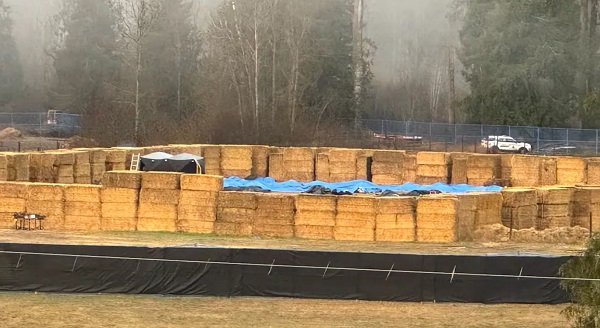
 Trish Wood
Trish Wood
Based on our Criminal Code — the answer is yes!
There is little doubt in my mind that what occurred at Universal Ostrich Farms represents a violation of our Criminal Code. This is not hyperbole for clicks — but rather a conclusion based on years as a science writer and judicial reporter.
The idea of code violations really took hold for me yesterday when I read a note posted by a follower from a Canadian veterinarian who is outraged over the cruelty and bad science that underpin this ugly chapter in our history.
But first: There are reports from the ostrich farm that there were two rounds of shooting. One at night, in the dark and another in the morning. If true, this suggests a horror. That some birds weren’t killed instantly. Did some lay dying overnight and “finished off” in daylight? Help me understand how this could even happen? Why were some of the corpses beheaded – which is an unapproved method of killing. Were some found alive after the snipers left and beheaded by CFIA staff?
It’s been reported, but not verified, that roughly 1000 rounds (bullets) were fired to kill between 300 and 350 birds. Simple math says — three shots each, give or take. But we know it wouldn’t have worked out that way. Some would have died instantly and others would have been shot repeatedly — perhaps fighting and writhing until the end. This outcome should have been predicted. We need to see the plan. What instructions were the shooters given and by whom?
This “culling” requires a criminal prosecution and I do hope that someone visits a local lawyer about how to push a Crown for charges. There will be government recordings and they should be made public. I suspect this event went badly off the rails.
Because they were firing at night, in order to prevent media from attaining the gruesome truth, it’s likely some of the marksmen missed their targets even with portable lighting and scopes. That kill shot might have been the head — which is quite small and always moving. The body is less likely an instant kill but an easier target.
We must demand both the criminal, animal cruelty investigation and a public inquiry, under oath to determine how CFIA argues this was necessary. I do hope the veterinary science schools will step up — especially Guelph which is considered one of the best in the world.
Below is the criminal code on animal cruelty.
After an international conference on Avian Flu — a Swedish vet and academic wrote a paper on acceptable killing methods. Shooting birds is listed under “Less Acceptable”. Here is the link.
CFIA’s own handbook says killing by shooting should only be used as a last resort. From a CTV story.
The manual says gunshots should be considered “as a last resort” for euthanasia, while breaking a bird’s neck is also appropriate in some situations, and is listed among methods “when dealing with larger birds such as emus and ostriches.”
It’s difficult to know what actually happened during the actual killing but accounts of the infamous 1932 Emu War in Australia suggest the birds would have been very aware they were about to die. We can understand better the bird’s experience of it by looking at that case given the similarities between these species.
The military was deployed with machine guns to cull emus that had been ruining local farm crops. History reports that the emus won the battle because they were using strategy and tactics to stay alive including posting lookouts. From Britanica, link here.
“It soon became clear that one emu in each group served as a lookout to warn the others, giving them time to escape. Meredith stated publicly that the emus could “face machine guns with the invulnerability of tanks.” Such statements made military action against the emus increasingly unpopular, with opponents arguing that such treatment of emus was inhumane.”
These are intelligent creatures with a will to live and to protect themselves.
Emus proved difficult to kill during the Emu War for a combination of reasons related to their natural resilience, speed, unpredictable behaviour, and the unsuitability of the military’s tactics and equipment.
This is another Jenga pull in our country’s downfall at the hands of robotic bureaucrats and “scientists” who long ago parked their humanity in service of groupthink and politics.
Why didn’t CFIA take advantage of offers to keep the birds alive by moving them to the United States? The same reason the Liberal government invoked violence and the Emergencies Act against peaceful protestors even though there was a deal being struck with the city and Convoy leaders wanted to talk.
It is the flex. The kind used around the world by tyrants to keep uppity citizens frightened and docile — which Canada most certainly is these days.
We are a signatory to a treaty with the animal equivalent of the WHO – called the World Organization for Animal Health, headquartered in Paris. This is to protect our poultry producers and their markets.
It is this international body that governs how CFIA behaves. And it rules with the same kind of fear mongering propaganda that the human version does. A good idea — badly executed and designed to save industry at any cost. Culling sick animals is sometimes necessary. But that’s not what happened at the ostrich farm.
Stay critical.
#truthovertribe
Trish Wood is Critical is a reader-supported publication.
To receive new posts and support my work, consider becoming a free or paid subscriber.
Business
CBC cashes in on Carney as the news industry playing field tilts further in its favour, crippling the competition

“Private” sector will find it more difficult to compete. Plus! Outrage over manipulation of Trump speech and the common error of burying balance
These are happy days at the Canadian Broadcasting Corporation.
With the threat of a “defund the CBC” Conservative government fading ever faster in its rearview mirror, the nation’s publicly-funded commercial news and entertainment corporation (aka public broadcaster) is poised to take an even larger share of the market thanks to Prime Minister Mark Carney’s first budget.
Please consider becoming a free or paid subscriber to The Rewrite.
Your encouragement is appreciated.
Sure, tens of thousands of public sector employees may be about to lose their jobs, services face cutbacks and the feds might be rewriting collective bargaining rules in their favour. But as we learned Nov. 4, the CBC will – as promised in last spring’s election – get a $150 million top up to the $1.4 billion Parliament already allocates to it. There’s every chance that means it will be an even more aggressive competitor in the news market for viewers, listeners, readers and advertisers. One in three working journalists in the country already work for CBC/Radio Canada. If an 11 percent hike in funding is reflected in newsroom job growth, that number could move closer to 37 per cent.
Federal funding for “private sector” news organizations has remained flat (with the exception of a $12 million boost to a fund introduced as Covid relief). That means the news industry playing field has been tilted even more in the CBC’s favour, making it harder for outlets that are not the CBC to compete or even survive. There will be less opportunity for news innovators and increased private sector job losses will lead to demands for larger subsidies from industry lobby groups such as News Media Canada and the Canadian Association of Broadcasters. Good news for the CBC means bad news for others. This is either a really bad mistake by Carney or, making the CBC even more dominant as a news source (it has the most popular domestic website) is part of his plan.
Further brightening the outlook for journos at the Mother Corp was the news from CBC President Marie-Philippe Bouchard that there’s no need to investigate antisemitism within its ranks and, while its relationship with rural and western Canadians could be better, it’s unlikely the status quo will be disrupted. Editor in Chief Brodie Fenlon confirmed that conclusion by testifying before a Senate committee that the CBC’s newsrooms are the least biased he’s ever worked in.
Yup, life at the Mother Corp’s looking rosier than ever.
Perhaps as an unintended metaphor for CBC’s growth at private media’s expense, Postmedia’s Brian Passifiume illustrated his relative poverty by jocularly complaining about the lack of a free lunch for those within the budget lockup.
Time was when journos would refuse a free lunch from a subject of their coverage. Now they complain publicly about not getting one.
Speaking of the budget, a couple of items caught the eye.
One was the jaw-dropping Tweet by the Hill Times’ Stu Benson noting how journalists were partying post-budget at Ottawa’s trendy Metro Brasserie with government MPs and bigwigs. It, accompanied by photos, stated:
“Hundreds of politicos, journalists, and libatious Liberals joined Finance Minister François-Philippe Champagne for a post-budget victory lap at the @MetroBrasserie_ on Nov. 4 at @EarnscliffeCda X @politicoottawa’s”
In response, Twitter sage Norman Spector shared Benson’s post and wrote:
“How it works in Ottawa: Politicos, journalists and Liberals at a post-budget victory lap – a shindig co-sponsored by a lobbying firm.”
And media wonder why so many no longer have faith in them?
The other item involved what is termed an “advance” story posted by the CBC. The problem wasn’t that the story failed to contain all the key elements and expected perspectives. It did. The problem was that none of those were introduced at all until the 10th paragraph and you have to go another 28 paragraphs or so before the Conservatives, Bloc and NDP are even mentioned, making the piece read like a government news release. This is a common error in newsrooms where staff should know by now that most people consume news by reading a headline and – give or take – the top six paragraphs before moving on.
So, unless reporters introduce balance within the first three paragraphs, most people will be unaware that alternative views exist.
CBC is hardly alone in making this error, although its dominance in the market enhances its impact.
Please consider becoming a free or paid subscriber to The Rewrite.
Your encouragement is appreciated.
During my spells in Ottawa – briefly within the Parliamentary Press Gallery and longer at the CRTC – I was struck by how little so many reporters working there know about how government and its institutions actually work.
Most, in my recollection, cover only the drama, intrigue and theatre of politics. For too many, the daily routine consists of scanning news releases, phoning their contacts and watching Question Period on CPAC before venturing (maybe) across Wellington Street (is it still called that?) for a scrum or two.
What most don’t bother with at all are some of the most important aspects of the machinery of government such as the work of committees, the regulations that follow passage of legislation or, as Blacklock’s Reporter Publisher Holly Doan pointed out last week, the estimates that follow a budget.
These are important matters and the lack of coverage by subsidized media leaves the public ill-informed. For instance, as the Liberals move to buy off opposition MPs to form a majority government people did not vote for, they will also be able to claim control over committees.
So, as the nation morphs inexorably into a permanent one-party state, the absence of coverage in these areas will be increasingly evident. If you want to be a fully informed citizen, find a news outlet that covers these important matters and subscribe.
A little more than a year ago, people were being fired at CTV for manipulating quotes from Conservative leader Pierre Poilievre.
That practice delivered an even more devastating impact on public trust in journalism when it was revealed that the BBC program Panorama had blended two phrases from US President Donald Trump. As The Standard reported:
“In a clip from a Panorama programme, broadcast before the election, Trump appears to tell supporters: “We’re going to walk down to the Capitol…and I’ll be there with you. And we fight, we fight like hell.
“But the words were taken from different sections of his speech, nearly an hour apart. In the original footage, his language is more restrained: “We’re going to cheer on our brave senators and congressmen and women,” adding his supporters will march “peacefully and patriotically” to make their voices heard.”
Opposition MPs are demanding an inquiry. In this clip, GB News takes no prisoners. Reports Saturday indicate the chair of the BBC would be officially apologizing.
Michael Geist is not a journalist. He’s a law professor and internet expert. And his coverage of the budget – in a Substack note – was a fabulous example of the importance of a free and open internet as a source of valuable information about important matters overlooked by mainstream media. He said:
“Canadian government departments are big believers that AI will be the source of reducing expenses. Finance, Justice, CRTC, Fisheries, CRA, ESDC all cite new efficiencies from AI to explain how they will meet the 15% spending reduction target in the budget.”
And, as I wrote in The Line a couple of months back:
“Two years ago, the Liberals were hoping to claim they’d saved legacy media from Big Tech. All they really did was stake it for AI to devour.”
But you won’t read that in legacy media. Just here. Tell your friends.
Oh and one last treat for those of you who enjoy a snappy front page:
Readers will notice a new DONATE button has been added. Please consider making use of it and help us save journalism from bad journalism.
(Peter Menzies is a commentator and consultant on media, Macdonald-Laurier Institute Senior Fellow, a past publisher of the Calgary Herald, a former vice chair of the CRTC and a National Newspaper Award winner.)
Please consider becoming a free or paid subscriber to The Rewrite.
Your encouragement is appreciated.
-

 Brownstone Institute6 hours ago
Brownstone Institute6 hours agoBizarre Decisions about Nicotine Pouches Lead to the Wrong Products on Shelves
-
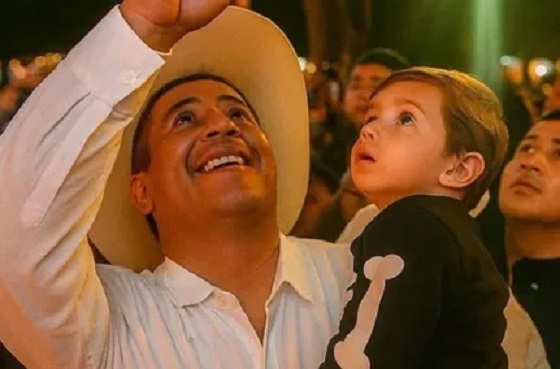
 Crime1 day ago
Crime1 day agoPublic Execution of Anti-Cartel Mayor in Michoacán Prompts U.S. Offer to Intervene Against Cartels
-
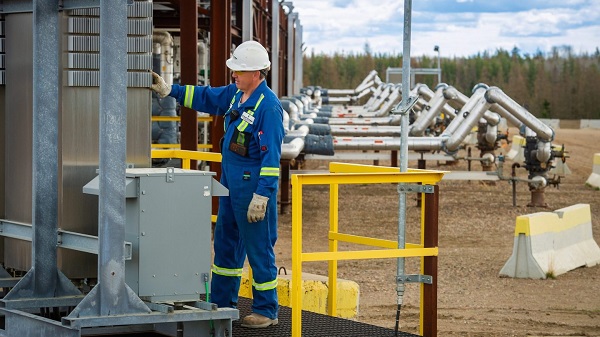
 Alberta1 day ago
Alberta1 day agoCanada’s heavy oil finds new fans as global demand rises
-

 Alberta7 hours ago
Alberta7 hours agoAlberta government’s plan will improve access to MRIs and CT scans
-

 Bruce Dowbiggin1 day ago
Bruce Dowbiggin1 day agoA Story So Good Not Even The Elbows Up Crew Could Ruin It
-

 Environment1 day ago
Environment1 day agoThe era of Climate Change Alarmism is over
-
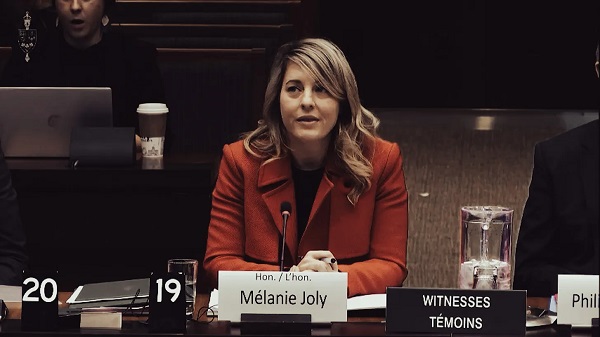
 Business8 hours ago
Business8 hours agoNo Jobs Clause: Liberals Under Fire Over Stellantis Deal in Fiery Committee Showdown
-

 Addictions1 day ago
Addictions1 day agoThe War on Commonsense Nicotine Regulation













